Comparative Efficacy of Chiropractic Adjustments in Peripheral Neuropathy Management
July 7, 2025
26 min

Understanding Peripheral Neuropathy and Chiropractic Care
Peripheral neuropathy is a complex condition characterized by nerve damage that causes symptoms such as pain, tingling, numbness, and muscle weakness, commonly affecting the hands and feet. Traditional medical treatments often focus on managing symptoms through medication, lifestyle changes, and physical therapy. Increasingly, chiropractic care emerges as a complementary approach, primarily through spinal adjustments intended to restore nerve function and reduce symptom severity. This article explores the scientific evidence and clinical insights into the efficacy of chiropractic adjustments in managing peripheral neuropathy, comparing it with other therapeutic options while evaluating safety, mechanisms, and outcomes.
Neurological Effects of Chiropractic Adjustments: Mechanisms Behind Symptom Relief
What neurological effects do chiropractic adjustments have?
Chiropractic adjustments predominantly influence the nervous system in ways that can alleviate symptoms associated with peripheral neuropathy and other nerve-related conditions.
One of the primary effects is the regulation of the autonomic nervous system, especially by stimulating the parasympathetic branch. This promotes a state of relaxation, reduces stress, and enhances the body's natural healing processes.
Moreover, chiropractic treatments trigger the release of neurotrophins such as Brain-Derived Neurotrophic Factor (BDNF) and Nerve Growth Factor (NGF). These molecules are vital for neuroplasticity, which is the nervous system's ability to reorganize itself, thereby potentially improving nerve function and mood regulation.
Spinal adjustments also contribute to correcting misalignments (subluxations) that may impair nerve signals. By doing so, they help reduce inflammation along nerve pathways and improve blood circulation. Better blood flow ensures that nerves receive adequate oxygen and nutrients, crucial for nerve repair and optimal function.
Research indicates that these combined effects can lead to improved nerve conduction, reduced sensations of tingling or numbness, and overall better neurological health. These mechanisms underpin the use of chiropractic care not only for pain relief but also for promoting nerve recovery and functional improvements in neuropathy patients.
While chiropractic care cannot reverse nerve damage, it can serve as a supportive therapy that enhances nerve health, alleviates discomfort, and contributes to improved quality of life.
Scientific Evidence Supporting Chiropractic Adjustment Efficacy
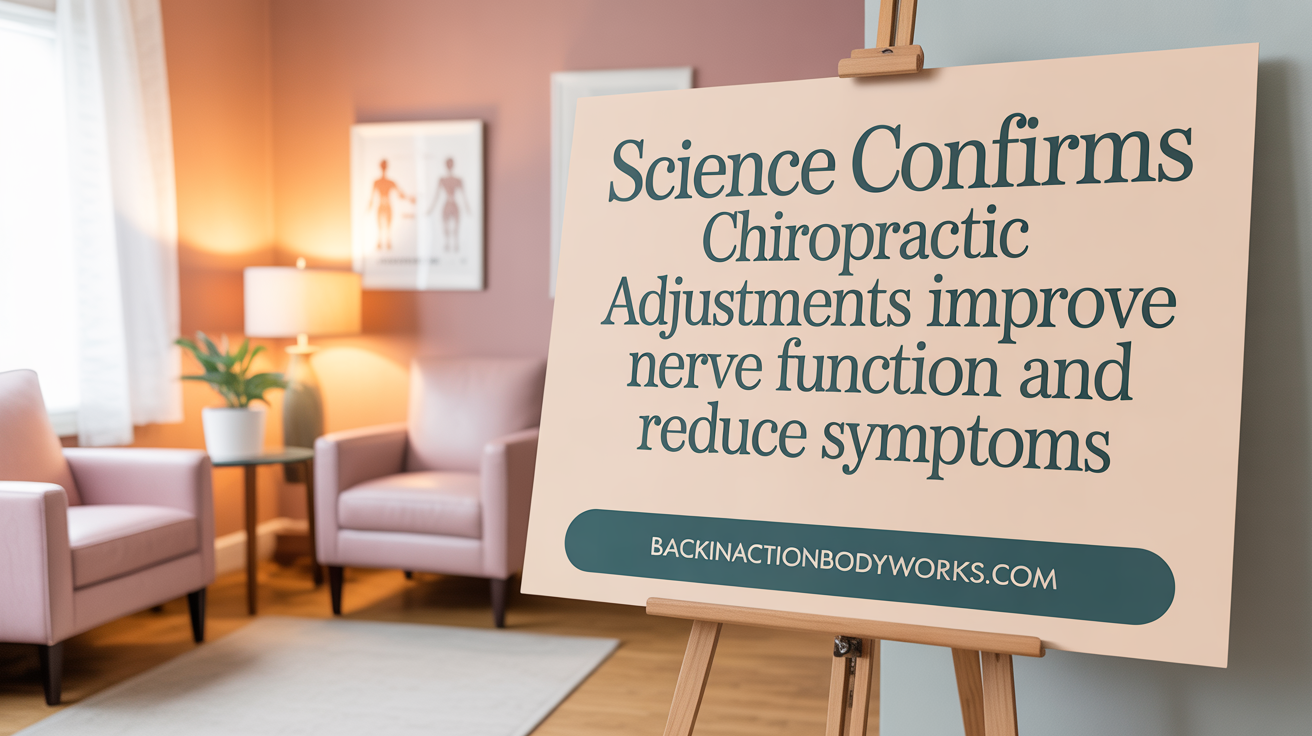
Is there scientific evidence supporting the effectiveness of chiropractic adjustments?
Numerous clinical trials and systematic reviews provide evidence that chiropractic care, especially spinal manipulation, effectively reduces pain and improves function in patients with low back pain. Studies show that chiropractic adjustments can lead to significant short-term pain relief, increased lumbar mobility, and decreased disability. For example, research involving randomized controlled trials demonstrates consistent benefits for acute, subacute, and chronic low back pain.
Beyond back pain, evidence suggests chiropractic care can also alleviate neck pain and certain types of headaches, with many studies indicating superior or comparable outcomes to other conservative therapies. Although the evidence for migraines remains inconclusive, many patients report symptom improvements after chiropractic interventions.
Spinal manipulation appears to be a safe treatment modality when performed by licensed practitioners, with serious adverse effects being extremely rare. Minor side effects, like temporary soreness, are common but generally resolve quickly. This favorable safety profile reinforces its role as a conservative treatment option.
However, it is important to note that the strength of evidence varies across conditions. For some, like peripheral neuropathy, current research is limited, and more high-quality studies are necessary. Yet, the mechanism—restoring nerve alignment and reducing nerve pressure—aligns with clinical observations of symptom improvement.
Studies on low back pain, neck pain, and headaches
| Condition | Evidence Strength | Study Types | Effects Observed |
|---|---|---|---|
| Low Back Pain | Moderate to strong evidence | RCTs, systematic reviews | Pain reduction, improved mobility, decreased disability |
| Neck Pain | Low to moderate evidence | Clinical trials | Symptom alleviation, improved function |
| Headaches (including migraines) | Mixed, limited high-quality data | Case studies, small RCTs | Symptom relief reported in many cases |
| Peripheral Neuropathy | Limited evidence, under investigation | Few targeted studies | Preliminary suggestions of symptom management |
Safety profile and response variability
Chiropractic care generally boasts a very low risk of serious adverse effects. Studies indicate that most side effects are minor, such as transient soreness or discomfort, and tend to resolve quickly. Individual responses vary, with some patients experiencing substantial relief and others reporting minimal benefit.
Limitations of current evidence
Despite promising results, many studies face limitations like small sample sizes, short follow-up periods, and methodological inconsistencies. High-quality, randomized controlled trials with standardized outcome measures are essential to confidently establish the efficacy of chiropractic adjustments for conditions like peripheral neuropathy. Continued research will help clarify which patients benefit most and optimize treatment protocols.
Chiropractic Care and Peripheral Neuropathy: A Symptomatic Management Approach

Can chiropractic care help in managing peripheral neuropathy symptoms?
Chiropractic care can be an effective approach in alleviating symptoms associated with peripheral neuropathy, primarily through addressing spinal misalignments that may impair nerve function. These misalignments, often called joint or vertebral subluxations, can exert pressure on nerves, leading to tingling, numbness, or pain.
By correcting these misalignments, chiropractors aim to relieve nerve impingement and promote better nerve signaling. Treatments typically include spinal adjustments, manual therapies, and modalities like electrical stimulation or ultrasound. These therapies may reduce inflammation, improve blood flow, and support nerve health.
Although chiropractic care does not have the capacity to reverse nerve damage directly, it serves as a useful non-invasive supplement to traditional treatments. Patients often experience reduced pain, improved mobility, and a better sense of well-being.
Chiropractic methods thus focus on symptom management and functional improvement, enhancing quality of life for individuals with peripheral neuropathy. Integrating chiropractic care with other medical strategies can optimize overall symptom control and nerve function support.
Role of spinal misalignments in nerve dysfunction
Spinal misalignments are believed to disrupt normal nerve pathways, leading to symptoms of peripheral neuropathy. When vertebrae shift out of place, they can compress or irritate nerves, impairing signal transmission.
Correcting these misalignments through chiropractic adjustments can restore the natural alignment of the spine and reduce nerve pressure. This may alleviate symptoms like tingling, numbness, and pain.
Research suggests that proper spinal alignment improves nerve conduction and helps maintain nervous system health, which is essential for peripheral nerve function.
Symptom alleviation through adjustments
Chiropractic adjustments are aimed at realigning spinal structures and relieving nerve pressure. This can lead to a significant reduction in neuropathy symptoms.
Patients often report feeling less tingling and numbness after sessions and notice an increase in mobility and comfort.
Additional modalities such as massage, electrical stimulation, or laser therapy may complement adjustments to enhance symptom relief and healing.
Complementary chiropractic modalities
Beyond spinal adjustments, chiropractors may employ various therapies to support nerve health and reduce discomfort. These can include:
- Soft tissue therapy and massage
- Ultrasound or laser therapy
- Electrical nerve stimulation
- Lifestyle and nutritional counseling
These modalities aim to reduce inflammation, improve circulation, and facilitate natural healing processes, contributing to overall symptom management.
Limitations regarding nerve damage cure
It's important to recognize that chiropractic care cannot cure nerve damage or reverse the underlying pathology of peripheral neuropathy.
However, it can effectively manage symptoms and improve quality of life.
Patients should understand that chiropractic treatments are best used in conjunction with medical therapies prescribed for nerve healing.
In summary, chiropractic care offers a non-invasive, supportive approach that can help control symptoms, enhance nerve function, and promote better nervous system health, making it a valuable component of a comprehensive neuropathy treatment plan.
Traditional Medical Treatments for Peripheral Neuropathy: Overview and Comparison
What are the commonly recommended medical treatments for peripheral neuropathy?
Medical treatment strategies for peripheral neuropathy primarily focus on alleviating symptoms and managing underlying causes. For instance, controlling blood sugar levels is crucial for patients with diabetic neuropathy, as it can slow disease progression.
Medications are a cornerstone of symptom relief. Commonly prescribed drugs include antidepressants like amitriptyline and duloxetine, which help reduce nerve pain. Anticonvulsants such as pregabalin and gabapentin are also frequently used to diminish nerve hypersensitivity.
Topical agents, like capsaicin cream or lidocaine patches, may be employed for localized pain relief. In some cases, immune-modulating drugs are considered, especially when autoimmune factors are involved.
Supportive therapies play an important role alongside medication. Physiotherapy can improve muscle strength and reduce cramps. The use of assistive devices, such as braces or orthotics, helps improve mobility.
Lifestyle modifications are emphasized, including regular exercise, avoiding nerve irritants (like alcohol and certain toxins), and proper foot care to prevent complications. These interventions aim to improve quality of life and functional abilities.
Despite their benefits, traditional treatments often have limitations. Many medications provide only partial symptom relief and may cause side effects such as dizziness or fatigue. Moreover, they do not reverse nerve damage but mainly manage symptoms.
An increasing number of patients explore complementary approaches, including chiropractic care, to enhance overall symptom management. Chiropractic interventions can help improve nerve function, reduce pain, and support mobility. They are often integrated into a holistic care plan aimed at improving functional outcomes and long-term health.
In summary, while standard medical treatments are essential and widely used for peripheral neuropathy, they are complemented by supportive therapies and lifestyle adjustments. Integrating these with other conservative approaches offers a comprehensive strategy for managing this complex condition.
Clinical Research on Spinal Manipulative Therapy (SMT) for Pain Conditions
How effective is SMT as a conservative treatment?
Spinal Manipulative Therapy (SMT) is widely recognized as a conservative approach for managing various pain conditions, especially low back and neck pain. Studies show that SMT can improve pain, increase range of motion, and reduce disability, with some research indicating it may be more effective than other conservative treatments in certain cases. While it cannot directly cure nerve damage or neuropathy, chiropractic care, which often includes SMT, can help manage symptoms such as pain and tingling by restoring nerve function and reducing muscle tension.
What do clinical guidelines recommend for spinal manipulation?
Current clinical practice guidelines strongly endorse the use of SMT, particularly for spine-related pain. Most guidelines recommend it as a first-line intervention, often combined with exercise and education, especially for chronic low back pain. Thoracic spinal manipulation appears to have slightly stronger support for effectiveness compared to cervical manipulation, likely due to the site of application. Additionally, well-respected organizations like NICE, the American College of Physicians, and European groups regard spinal manipulation as a beneficial treatment option.
How does SMT compare with other therapies?
Research indicates that chiropractic care, primarily through spinal adjustments, can provide outcomes comparable or superior to medications, physical therapy, and other conservative interventions. For instance, studies demonstrate that manual thrust manipulation offers greater short-term relief in pain and disability than mechanical-assisted techniques. Integration of SMT with other treatments can lead to better overall outcomes, although the differences are often small.
What is the evidence for low back and neck pain?
Numerous randomized controlled trials and systematic reviews support the effectiveness of SMT in reducing pain and disability in cases of low back pain—acute, subacute, and chronic. The safety profile of chiropractic care is favorable, with most adverse effects being minor and transient. While the evidence for neck pain is weaker, chiropractic care remains a common recommendation, with ongoing research needed to clarify its benefits fully.
| Aspect | Findings | Additional Details |
|---|---|---|
| Effectiveness | Proven for low back pain | Compared favorably with standard care and physical therapy |
| Safety | Very low risk | Most side effects are temporary |
| Recommendations | Strong endorsement | Guidelines favor SMT as a frontline treatment |
| Comparison | Often superior or equal | Compared to passive medical treatments |
| Research gaps | Need for high-quality long-term data | Especially regarding peripheral neuropathy and chronic conditions |
Spinal Manipulative Therapy continues to evolve as an evidence-based option that can be integrated into holistic patient care, relevant not only for pain relief but also for improving overall function and quality of life.
Efficacy of Spinal Manipulation in Low Back Pain: Implications for Neuropathy
What do randomized trial outcomes tell us?
Research has consistently shown that chiropractic spinal manipulation can lead to significant improvements in low back pain. Multiple randomized controlled trials reveal that patients undergoing spinal adjustments experience reductions in pain and disability, often comparable or superior to other conservative treatments like physical therapy or medication.
Studies indicate that spinal manipulation not only alleviates discomfort but may also enhance lumbar spine mobility. This is crucial for restoring function and reducing the long-term impacts of back-related issues.
How does it improve pain and disability?
Clinical findings demonstrate that spinal adjustment results in meaningful pain relief and improved perceived disability in many patients. It is considered a safe, effective option for managing low back pain, especially when combined with other conservative approaches like exercise and patient education.
Can it enhance range of motion?
Yes. Evidence suggests that chiropractic care can substantially increase lumbar spine range of motion, which contributes to better movement quality and functional capacity. Increased flexibility and reduced stiffness are important outcomes that support overall spinal health.
What mechanistic insights are relevant to neuropathy?
While chiropractic care cannot directly reverse nerve damage, it may influence nerve function indirectly. Spinal adjustments help restore proper alignment, reduce nerve pressure, and improve blood flow, which can alleviate symptoms like tingling or numbness associated with peripheral neuropathy.
Mechanistically, adjustments modulate neurophysiological pathways, possibly promoting endorphin release, decreasing inflammation, and enhancing nerve conductivity. These processes may contribute to symptom relief and improve nerve health.
| Study Type | Main Findings | Impact | Additional Notes |
|---|---|---|---|
| Randomized Controlled Trials | Significant pain reduction and mobility improvement | Validates clinical effectiveness | Comparing chiropractic care to other interventions |
| Systematic Reviews | Similar efficacy to physical therapy or medications | Supports conservative treatment use | Highlights the safety profile |
| Mechanistic Studies | Improvement in nerve function markers | Explains biological basis | Focus on neurophysiological responses |
Overall, while more research is needed to fully understand mechanisms, current evidence supports chiropractic spinal manipulation as a valuable component of managing lower back pain and potentially offering relief for related neuropathic symptoms.
Multiple Randomized Controlled Trials Validating Chiropractic Care
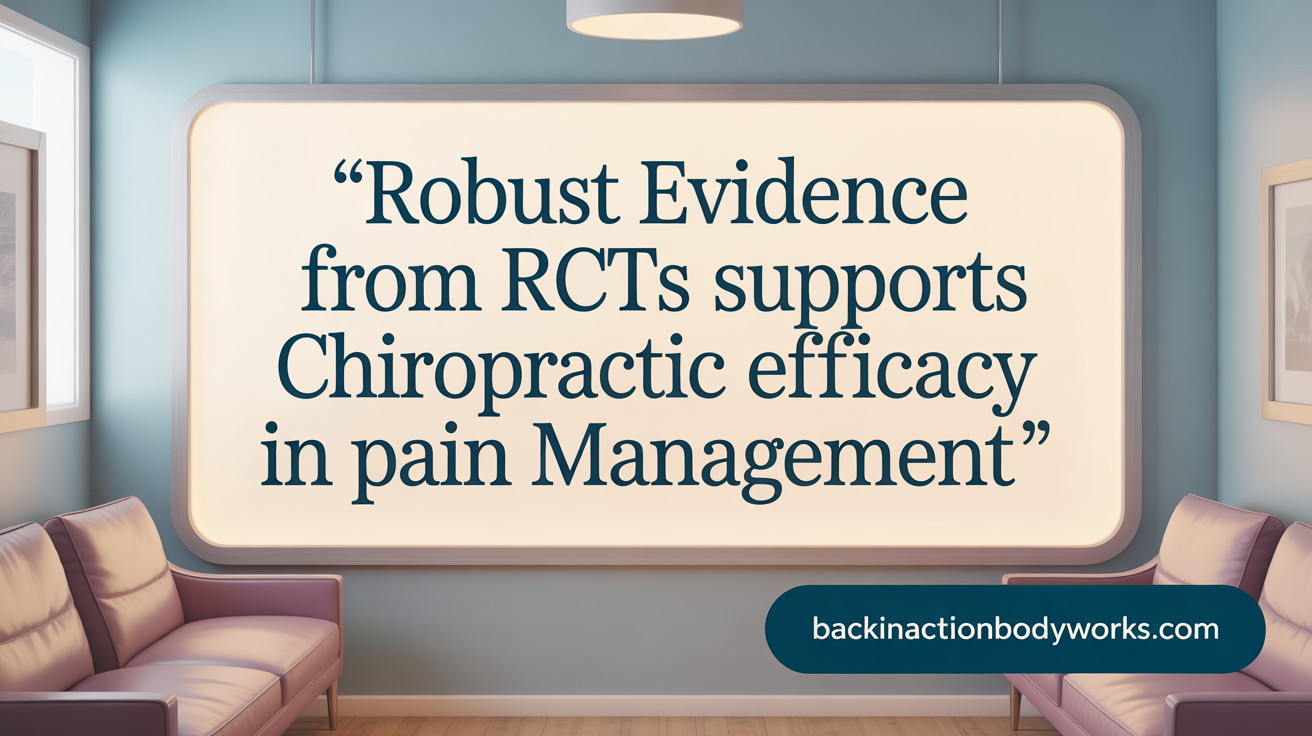
Clinical trials evidence base
Numerous randomized controlled trials (RCTs) have provided scientific support for the effectiveness of chiropractic care, especially in managing low back and neck pain. These studies demonstrate that spinal manipulation and manual therapy can significantly reduce pain levels, increase lumbar mobility, and improve overall function.
A recent review of RCTs revealed that chiropractic spinal manipulation is often comparable, or even superior, to other conservative treatments such as physical therapy, medications, and acupuncture. For example, trials comparing chiropractic care with usual medical care have found notable benefits in pain relief and disability reduction for acute, subacute, and chronic low back pain. The scientific research underscores chiropractic adjustments as a safe and effective intervention supported by high-quality evidence.
Pain reduction and functional improvement
Chiropractic adjustments work through biomechanical corrections, neurophysiological responses like endorphin release, and improved blood flow, which collectively help alleviate nerve pressure and muscle tension. These mechanisms contribute to clinically meaningful reductions in pain and enhance patients' mobility.
Studies show that patients experience improved disability scores and general health status following chiropractic treatment. Some research even suggests chiropractic care may have advantages over conventional therapies in certain cases, including faster pain relief and better functional outcomes.
Comparisons with usual care and physical therapy
Compared to standard medical treatments, chiropractic care demonstrates similar or improved results in managing pain and function. When combined with other interventions like exercise and education, it offers a comprehensive approach with added benefits.
Research also indicates that chiropractic spinal manipulation produces significant improvements in pain and disability, often with minimal adverse effects. Interestingly, some data suggest that chiropractic care can reduce the likelihood of requiring surgical intervention, as only around 1.5% of chiropractic patients needed surgery compared to 42% in other groups.
Safety and adverse events profile
Chiropractic care is characterized by a very low risk profile. Serious adverse events are exceedingly rare, with most side effects being minor and transient, such as temporary soreness or discomfort. The consensus among scientific reviews is that chiropractic adjustments are safe when performed by qualified professionals.
Overall, the accumulated evidence from high-quality RCTs affirms that chiropractic care is an effective, safe, and valuable option for managing low back and neck pain, and potentially other related conditions. As ongoing research continues to clarify mechanisms and optimize treatment protocols, chiropractic interventions remain a cornerstone of conservative musculoskeletal management.
Low-Velocity Variable Amplitude Spinal Manipulation in Animal Models
LVVA-SM technique details
Low-Velocity Variable Amplitude Spinal Manipulation (LVVA-SM) is a specific manual therapy technique that involves cyclical flexion at the L5 vertebra and manual pressure. The technique is characterized by its gentle, rhythmic application at controlled frequencies, typically ranging between 0.15 to 0.16 Hertz. This method aims to stimulate spinal tissues with minimal force, reducing discomfort while promoting therapeutic effects.
Findings from rat peripheral neuropathy model
Recent studies using adult male Sprague Dawley rats have demonstrated the potential benefits of LVVA-SM in conditions involving nerve hypersensitivity. In a rat model of peripheral neuropathy induced by spared nerve injury (SNI), LVVA-SM significantly reduced mechanical hypersensitivity, a common symptom of nerve damage. The application of this technique resulted in decreased pain sensitivity, suggesting an effect on nerve function and pain modulation.
Implications for human treatment
Although direct translation from animal models to humans requires caution, these findings support the potential utility of LVVA-SM in managing peripheral nerve-related symptoms. The technique's ability to alleviate hypersensitivity could translate into improved symptom control for patients suffering from conditions like peripheral neuropathy. It may serve as a non-invasive adjunct to conventional treatments, helping to reduce pain and improve mobility.
Frequency and manual application parameters
LVVA-SM is administered at low frequencies, typically around 0.15 to 0.16 Hertz, involving cyclic movements and manual pressure. These parameters are designed to deliver gentle, consistent stimulation to the spinal tissues, minimizing the risk of adverse effects. The manual aspect allows practitioners to tailor the pressure and movement to each patient's specific needs, optimizing therapeutic outcomes and patient comfort.
SoftWave Therapy: A Novel Non-Invasive Option for Neuropathy
How does SoftWave therapy utilize shockwave technology?
SoftWave therapy operates using shockwave technology, which involves the application of acoustic waves to targeted tissues. These shockwaves stimulate the body's natural healing processes by increasing blood flow, reducing inflammation, and promoting tissue repair. Unlike traditional invasive procedures, SoftWave's non-invasive approach minimizes discomfort and risk.
How does SoftWave therapy promote nerve regeneration?
One of the promising aspects of SoftWave therapy is its ability to stimulate nerve regeneration. By encouraging increased circulation and activating cellular repair mechanisms, it helps repair damaged nerve tissues and restore nerve function. Patients with peripheral neuropathy often experience symptom relief, such as reduced tingling and improved mobility, as the therapy supports the body's reparative processes.
What do clinical observations and patient feedback indicate?
Clinical outcomes and patient testimonials suggest that SoftWave therapy effectively reduces neuropathy pain and enhances nerve function. Patients report significant improvements in pain levels, increased sensation, and overall well-being. Because of its minimal side effects—most experiencing little to no discomfort—it's seen as a safe adjunct or alternative to more invasive treatments.
How does SoftWave therapy compare to traditional pharmacologic treatments?
Compared to medications typically used for neuropathy, such as pain relievers and topical agents, SoftWave therapy is less likely to cause adverse effects. It offers a non-drug option that targets underlying issues rather than just symptom management. While traditional treatments can be expensive and may incur side effects over time, SoftWave is generally well-tolerated and may provide longer-lasting relief, although it might not yet be as widely available or covered by insurance.
| Aspect | SoftWave Therapy | Traditional Treatments | Additional Details |
|---|---|---|---|
| Method | Shockwave acoustic stimulation | Medications, topical agents | Stimulates healing via mechanical waves; non-invasive |
| Side Effects | Minimal, rare discomfort | Potential side effects, dependency | Mostly safe; side effects are temporary |
| Cost & Accessibility | Possibly higher initial cost | Widely covered, insurance accepted | May require investment but offers long-term benefits |
| Main Benefits | Promotes nerve regeneration, reduces pain | Symptom relief, managing underlying causes | Focuses on natural healing processes |
| Supporting Evidence | Clinical observations and pilot studies | Varied, often limited by side effects | More research needed to establish standardized protocols |
Overall, SoftWave therapy is gaining recognition as a safe and effective adjunct in the management of peripheral neuropathy, especially for patients seeking non-invasive options to reduce pain and promote nerve healing.
Safety Profile and Risk Considerations of Chiropractic Adjustments
What is the incidence of adverse events related to chiropractic adjustments?
Research indicates that chiropractic spinal manipulation is associated with a very low risk of serious harm. Most adverse effects are minor, temporary, and include symptoms such as mild soreness or discomfort at the site of treatment. Serious adverse events, such as strokes or nerve damage, are exceedingly rare, with some studies suggesting an occurrence rate of less than 1 in a million treatments.
How does the risk compare to other treatments?
Compared to pharmaceutical or surgical interventions, chiropractic care has a favorable safety profile. For example, studies show that only about 1.5% of patients seeking chiropractic care required surgery, a significant reduction compared to 42% of patients who initially consulted surgeons. This positions chiropractic adjustments as a low-risk conservative option for managing low back and neck pain.
What do guidelines say about the safety of spinal manipulation?
Professional and clinical guidelines from organizations like the American College of Physicians and NICE endorse chiropractic spinal manipulation as a safe and effective treatment for certain types of low back pain. A modified Delphi consensus process involving health professionals has reaffirmed the safety and appropriateness of spinal manipulative therapy, emphasizing its minimal risk when performed by trained practitioners.
Why is patient education about safety important?
It is essential to inform patients about the safety profile of chiropractic care to support informed consent. Patients should understand that while minor side effects are common, major adverse events are extremely rare. Educating patients about what to expect can also help alleviate concerns and improve treatment adherence.
This evidence underscores that chiropractic adjustments are generally safe, especially when conducted by qualified practitioners. Maintaining ongoing research and open patient communication helps ensure the continued safety and acceptance of chiropractic care in managing neuromusculoskeletal conditions and symptoms.
Integrative Care Approaches Including Chiropractic for Neuropathy

Combining chiropractic with exercise and education
Chiropractic care is often integrated with other treatments such as exercise and patient education to provide a comprehensive management plan for peripheral neuropathy. This holistic approach aims to not only alleviate symptoms like tingling and pain but also to improve overall nerve function and mobility. Chiropractors focus on spinal adjustments that may reduce nerve pressure, alongside promoting lifestyle modifications that enhance recovery.
Outcomes from integrative models
Research indicates that combining chiropractic care with other conservative interventions results in better outcomes for neuropathy patients. Studies have shown improvements in pain levels, sensory function, and mobility when chiropractic treatment is part of a broader, multifaceted plan. Patients report feeling more energized and experiencing an overall better quality of life.
Benefits over single modality
Using an integrative model offers advantages over relying on a single treatment method. For instance, chiropractic adjustments can be complemented with physical therapy, medications, or innovative therapies like SoftWave shockwave treatment. This coordinated approach tends to produce faster and more sustained symptom relief, and can address multiple underlying issues effectively.
Patient-centered holistic management
Holistic care emphasizes individualized treatment plans that consider each patient’s unique condition, lifestyle, and preferences. Chiropractors often serve as part of a multidisciplinary team, ensuring that treatments are safe, effective, and aligned with overall health goals. Such personalized strategies support not only symptom relief but also improve nerve health, circulation, and long-term well-being.
| Aspect | Description | Benefits |
|---|---|---|
| Multi-Modal Integration | Combining chiropractic care with exercise, education, and other therapies | Enhanced symptom improvement and functional recovery |
| Outcome Focused | Emphasizing patient-specific goals and outcomes | Better adherence and satisfaction |
| Safety & Effectiveness | Evidence supports safe, effective integrative care | Minimal risks with substantial benefits |
| Long-term Well-being | Aiming for sustained health improvements | Reduced reliance on medications and surgeries |
Biomechanical and Neurophysiological Mechanisms Underlying Chiropractic Benefits
Restoration of spinal alignment
Chiropractic care primarily focuses on correcting spinal misalignments, known as subluxations, which can impair nerve function and cause pain or other neurological symptoms. By realigning the spine through manual adjustments, chiropractors aim to restore proper biomechanics, which reduces nerve pressure and alleviates symptoms related to peripheral neuropathy.
Reduction in nerve compression
One of the main goals of spinal manipulation is to relieve compression on nerves, especially those originating from the spine. Nerve compression can lead to tingling, numbness, and pain in the legs and feet. Chiropractic adjustments help to decompress these nerves, facilitating better nerve signaling and potentially reducing neuropathic symptoms.
Modulation of inflammatory pathways
Chiropractic therapies also influence inflammatory processes by improving blood flow and lymphatic drainage around affected areas. Reduced inflammation may decrease nerve irritation and swelling, which are common contributors to neuropathy symptoms. Targeted manual therapies can thus assist in managing inflammation consistent with a comprehensive treatment plan.
Endorphin release and CNS effects
Research indicates that chiropractic adjustments can stimulate the release of endorphins—natural pain-relieving chemicals in the central nervous system. This neurophysiological response not only reduces pain perception but also promotes overall well-being. The modulation of pain signals by the central nervous system may contribute significantly to the symptomatic relief experienced by patients with neuropathy.
This combined biomechanical and neurophysiological approach underscores how chiropractic care can serve as an effective adjunct in managing neuropathic symptoms. Though it cannot reverse nerve damage, manipulating spinal structures and influencing CNS responses can improve nerve function and overall quality of life.
| Mechanism | Effects | Additional Details |
|---|---|---|
| Spinal realignment | Reduces nerve pressure | Improves nerve conduction and decreases pain |
| Nerve decompression | Eases nerve impingement | Alleviates symptoms like tingling and numbness |
| Anti-inflammatory influence | Lowers inflammation | Supports nerve healing and reduces swelling |
| Endorphin release | Pain mitigation | Enhances mood and reduces perception of pain |
| CNS modulation | Pain signal regulation | Contributes to long-term symptom management |
Comparative Outcomes: Chiropractic vs. Traditional Physical Therapy
How does pain relief compare between chiropractic care and traditional physical therapy?
Chiropractic treatment, especially spinal manipulation, has demonstrated substantial benefits in alleviating pain associated with conditions like low back pain, which often overlaps with symptoms of peripheral neuropathy. Multiple randomized controlled trials suggest that chiropractic care can produce meaningful pain reductions, sometimes outperforming standard medical care or physical therapy.
Are there improvements in mobility and function with chiropractic care?
Research consistently shows that chiropractic adjustments can lead to increased lumbar and cervical range of motion, reduced disability, and enhanced overall health status in patients with low back pain. These effects contribute to better mobility, which is crucial for managing neuropathy symptoms that impair movement and daily activities.
What about patient adherence and satisfaction?
Patients generally report high satisfaction with chiropractic treatment, citing pain relief, improved mobility, and non-invasiveness as major benefits. Because chiropractic care is often personalized and perceived as proactive, adherence rates tend to be favorable, especially when integrated into comprehensive management plans.
Is chiropractic care cost-effective compared to physical therapy?
While both options are accessible and often covered by insurance, chiropractic care can be more cost-effective over the long term. Evidence indicates that fewer patients under chiropractic care require surgical interventions, and the low risk of serious adverse effects makes it a favorable conservative approach.
| Aspect | Chiropractic Care | Physical Therapy | Additional Insights |
|---|---|---|---|
| Pain Relief | Significant improvements; often superior in studies | Effective but variable results | Some evidence favors chiropractic for acute and chronic pain |
| Mobility & Function | Increased range of motion; reduced disability | Also improves mobility; benefits may depend on specific techniques used | Both modalities enhance function but may target different mechanisms |
| Patient Satisfaction | Generally high; non-invasive and personalized | High; depends on clinician and patient engagement | Satisfaction linked to perceptions of control and relief |
| Cost-Effectiveness | May reduce long-term costs; fewer surgeries needed | Cost-effective but possibly more sessions needed | Combined approaches might optimize outcomes |
Overall, chiropractic care presents a promising, low-risk option with comparable or sometimes superior outcomes in pain and function for conditions related to peripheral neuropathy. Its integration into a comprehensive treatment plan may offer the best path towards long-term health improvements.
Chiropractic Care's Role in Enhancing Nerve Health and Function
Promotion of blood flow and oxygenation
Chiropractic care, especially spinal adjustments, can help improve circulation around nerves and tissues. By restoring proper spinal alignment, chiropractors may enhance blood flow and oxygen delivery to the affected nerves, which is vital for nerve health and recovery. Improved circulation can also aid in reducing symptoms like tingling and numbness often associated with peripheral neuropathy.
Reduction of neural inflammation
Neural inflammation is a common contributor to nerve pain and dysfunction. Chiropractic therapies, including manual adjustments and adjunct modalities like ultrasound or laser therapy, can help decrease inflammation around nerves. Reducing inflammation not only alleviates pain but also creates a more favorable environment for nerve healing.
Support of nerve healing environment
While chiropractic care can't reverse nerve damage itself, it fosters an environment conducive to nerve repair and functional recovery. Techniques aimed at correcting spinal misalignments can alleviate nerve pressure and reduce muscle tension, enhancing nerve conduction and encouraging natural healing processes.
Tingling symptom management
Tingling in the legs and feet often results from nerve compression or impaired nerve signaling. Chiropractic adjustments aim to restore proper nerve function by relieving pressure and improving nerve conduction pathways. Many patients experience relief from tingling and other abnormal sensations as chiropractic care addresses underlying structural issues, supporting overall nerve health.
| Benefits of Chiropractic Care for Nerve Conditions | How It Works | Additional Modalities Used |
|---|---|---|
| Improved blood flow and oxygenation | Spinal adjustments reduce pressure on blood vessels | Ultrasound, laser therapy |
| Reduced inflammation | Manual therapies decrease neural inflammation | Electrical stimulation |
| Enhanced nerve repair environment | Correcting misalignments relieves nerve compression | Massage therapy |
| Tingling and abnormal sensation relief | Restoring nerve signal pathways | SoftWave shockwave therapy |
Chiropractic care presents a non-invasive, holistic approach that can complement traditional treatments and improve quality of life for those suffering from peripheral neuropathy. It emphasizes ongoing management and supportive care aimed at optimizing nerve function and overall health.
Limitations and Challenges in Chiropractic Research for Peripheral Neuropathy
Need for standardized outcome measures
One major challenge in chiropractic research related to peripheral neuropathy is the lack of standardized outcome measures. Current studies often use different parameters to evaluate pain, nerve function, and overall patient wellbeing. This inconsistency makes it difficult to compare results across studies and draw definitive conclusions about the effectiveness of chiropractic interventions.
Shortcomings in randomized controlled trial (RCT) designs
Many existing trials exhibit limitations in their design, such as small sample sizes, short follow-up periods, and inconsistent intervention protocols. These shortcomings weaken the reliability of the findings and hinder the development of clear clinical guidelines for chiropractic care in neuropathy management.
Importance of control groups
Despite some promising outcomes, a significant gap in research is the limited use of appropriate control groups. Proper controls, such as placebo or sham treatments, are essential to determine whether improvements are due to chiropractic procedures or placebo effects. The absence of control groups in some studies leaves uncertainty about the true efficacy of the treatments.
Recommendations for future research directions
To advance this field, future studies should focus on implementing standardized, validated outcome measures and robust RCT designs with larger participant pools. Incorporating control groups and longer follow-ups will enhance evidence quality. Moreover, exploring mechanisms of action and combining chiropractic care with other therapies could provide a comprehensive understanding of its role in neuropathy treatment.
Patient Perspectives and Clinical Observations in Chiropractic Neuropathy Care
Reported improvements
Many patients receiving chiropractic care for peripheral neuropathy report noticeable improvements in their symptoms. These can include a reduction in tingling, numbness, and pain in the legs and feet. Chiropractic treatment often involves spinal adjustments aimed at restoring nerve function, and patients frequently note a decrease in discomfort and increased mobility after sessions. Although nerve damage may be permanent, symptom relief is a common and encouraging outcome.
Quality of life enhancements
Patients undergoing chiropractic therapy often experience a broad enhancement in their overall well-being. Improved nerve function can lead to better blood flow and reduced muscle tension, contributing to increased energy levels and a more active lifestyle. Many individuals report not just symptom relief but also better sleep quality and decreased fatigue, which significantly boosts their quality of life.
Symptom relief consistency
While some patients experience consistent symptom relief, others may find the results vary. The effectiveness of chiropractic care can depend on factors such as the severity of nerve damage, overall health, and adherence to treatment plans. Regular chiropractic adjustments, alongside other modalities like electrical stimulation or ultrasound therapy, tend to produce more reliable improvements.
Challenges in patient response variability
It is important to acknowledge that responses to chiropractic treatment are not uniform. Some patients see substantial symptom decreases quickly, while others may require longer, more tailored approaches. Additionally, while chiropractic care helps manage symptoms effectively, it cannot reverse nerve damage. This variability emphasizes the need for individualized treatment plans and a comprehensive approach that includes lifestyle modifications and medical management.
| Aspect | Typical Outcomes | Considerations |
|---|---|---|
| Symptom relief | Tingling and pain reduction | Not all patients respond equally |
| Functional ability | Improved mobility and daily function | Response may vary with nerve damage severity |
| Overall satisfaction | Many report enhanced quality of life | Long-term continuous care is often beneficial |
| Challenges | Response variability among patients | Individual health status influences results |
Understanding the diverse patient responses helps practitioners tailor treatments, ensuring that each individual receives the most appropriate care, ultimately supporting better health outcomes.
Comparative Cost and Accessibility Considerations in Neuropathy Treatments
When exploring treatment options for peripheral neuropathy, understanding the costs and accessibility of each modality is essential.
Traditional treatments, such as medications and physical therapy, are generally widely available and often covered by insurance. This makes them more accessible to many patients, although the costs can add up over time, especially with long-term use. These therapies target symptom relief and aim to manage underlying causes, but their expense can be a significant burden.
In contrast, newer approaches like SoftWave therapy involve innovative shockwave technology that promotes healing and nerve regeneration. Although promising and with minimal side effects, SoftWave therapy might not be as readily available and often incurs higher initial costs. Insurance coverage for such treatments varies, which can limit access for some patients.
Chiropractic care, especially spinal manipulation, offers an alternative that is generally accessible. Many insurance plans do cover chiropractic treatments, making it a cost-efficient option for many. Chiropractic services may reduce the need for more invasive procedures or surgeries, potentially lowering overall healthcare expenses.
The economic impact influences patient choices significantly. While traditional methods are usually more affordable and covered, newer therapies may appeal for their potential long-term benefits despite higher upfront costs. Patients need to weigh these factors based on their insurance coverage, financial situation, and treatment preferences.
| Treatment Type | Typical Cost Range | Insurance Coverage | Notes |
|---|---|---|---|
| Medications & Physical Therapy | Varies; ongoing costs | Usually covered or partial | Long-term expenses can accumulate |
| SoftWave Therapy | Higher initial cost | Often limited or not covered | Emerging therapy; more research needed |
| Chiropractic Care | Moderate; often covered | Frequently included in plans | Can complement other treatments effectively |
Considering these factors helps patients and healthcare providers make informed decisions that balance clinical benefits with economic realities.
Summary and Future Directions in Peripheral Neuropathy Management
Chiropractic care offers promising benefits as a complementary approach in the management of peripheral neuropathy symptoms, especially through spinal adjustments that relieve nerve pressure, improve neurological function, and reduce pain. Scientific evidence robustly supports chiropractic interventions for musculoskeletal conditions, with emerging but still limited data specifically for neuropathy. While not a cure for nerve damage, chiropractic treatments enhance symptom control and functional outcomes when integrated with traditional medical therapies. The safety profile of chiropractic care is favorable, making it a viable adjunct in multidisciplinary management plans. However, substantial gaps remain in high-quality research focusing on chiropractic efficacy in peripheral neuropathy, necessitating further randomized controlled trials with standardized outcomes and long-term follow-up. Future investigations and integrative clinical models hold the potential to refine protocols, validate mechanisms, and optimize patient-centered care strategies for those suffering from peripheral neuropathy.
References
- Spinal Manipulative Therapy Reduces Peripheral Neuropathic Pain ...
- Clinical Effectiveness and Efficacy of Chiropractic Spinal ...
- Can a Chiropractor Help with Neuropathy - Chiropractic USA
- Traditional vs Modern Treatments for Peripheral Neuropathy
- Best Practices for Chiropractic Care for Older Adults: A Systematic ...
- [PDF] Comparison of Effectiveness of Chiropractic Spinal Manipulation ...
- Comparison of Effectiveness of Chiropractic Spinal Manipulation ...
- Practice-based randomized controlled-comparison clinical trial of ...
- Acupuncture, Tai Chi, Osteopathic Manipulative Medicine, and ...
Recent articles

Sciatica Relief Through Targeted Spinal Decompression

Integrating Physiotherapy with Chiropractic Treatments for Better Results

Testimonials That Demonstrate the Benefits of Chiropractic Care

The Power of Corrective Exercises in Pain Management

A Step-by-Step Guide to Your Initial Chiropractic Consultation

9 Nutritional Tips to Enhance Your Chiropractic Wellness Journey

Patient Experiences: How Chiropractic Care Changed Their Lives

Lifestyle Recommendations to Keep Your Spine in Top Shape

Effective Corrective Exercises for Long-Term Pain Relief

Back Pain Benefits: What Chiropractic Care Can Do for You
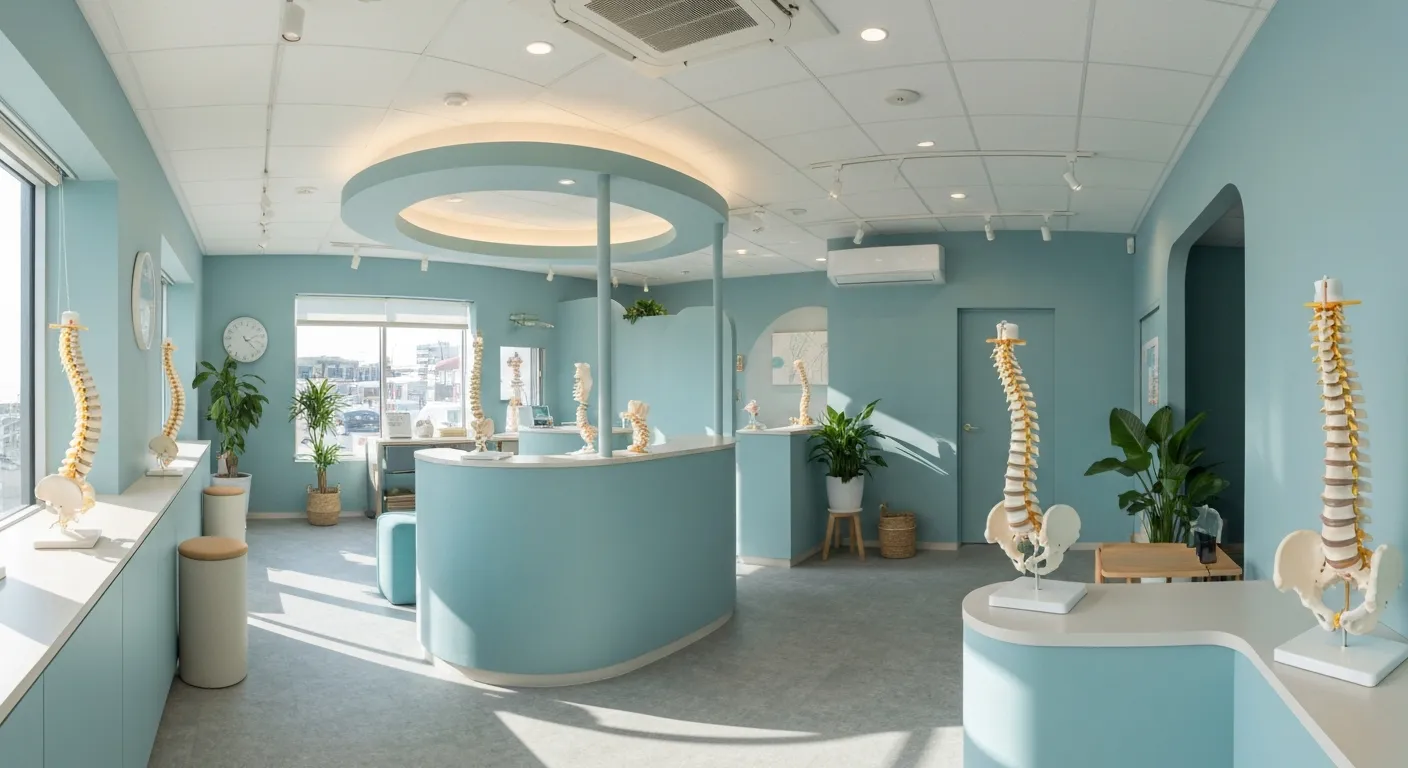
Spinal Decompression Techniques for Effective Sciatica Relief

Top Nutritional Counseling Tips for Enhanced Wellness
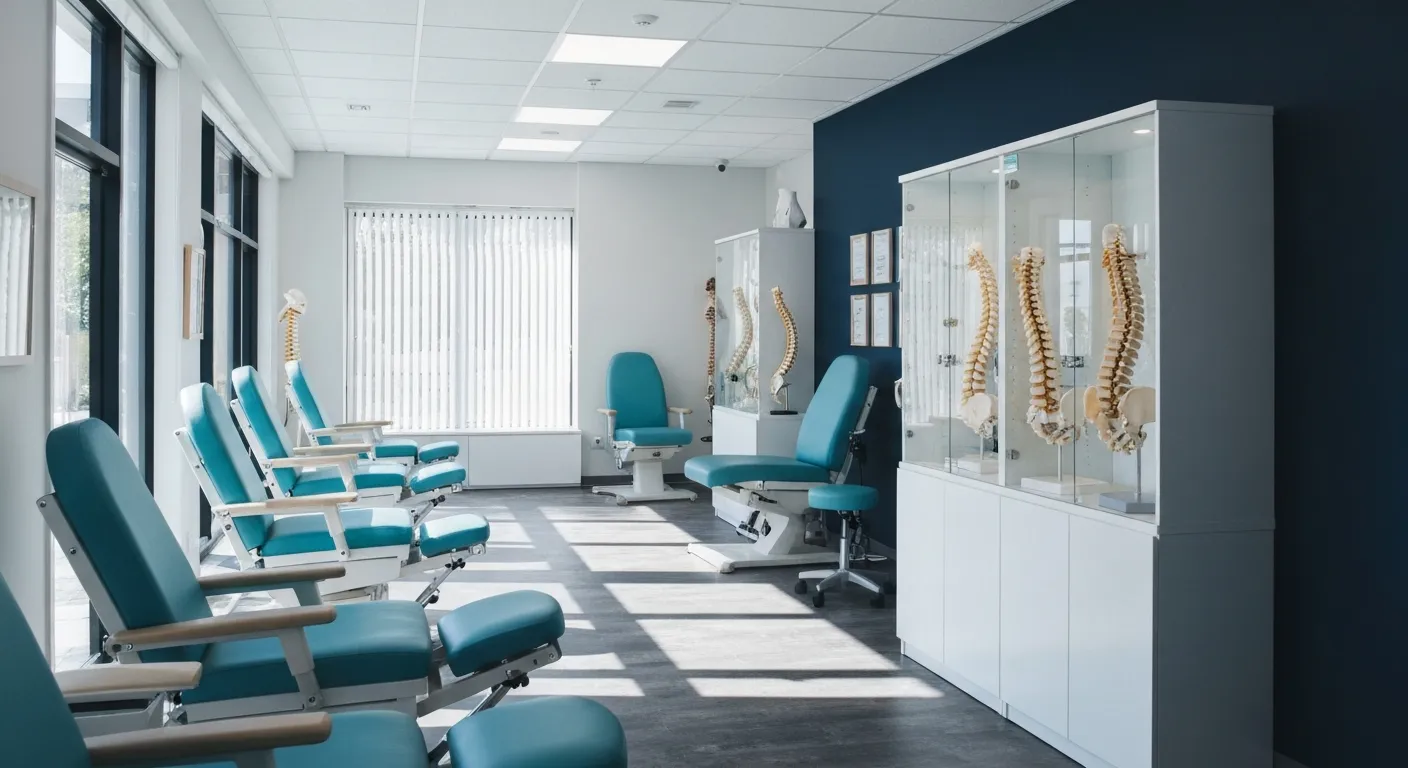
6 Lifestyle Habits That Boost Spine Health Daily

Discover Holistic and Non-Surgical Pain Relief Solutions

Exploring Holistic and Non-Surgical Treatment Options for Pain
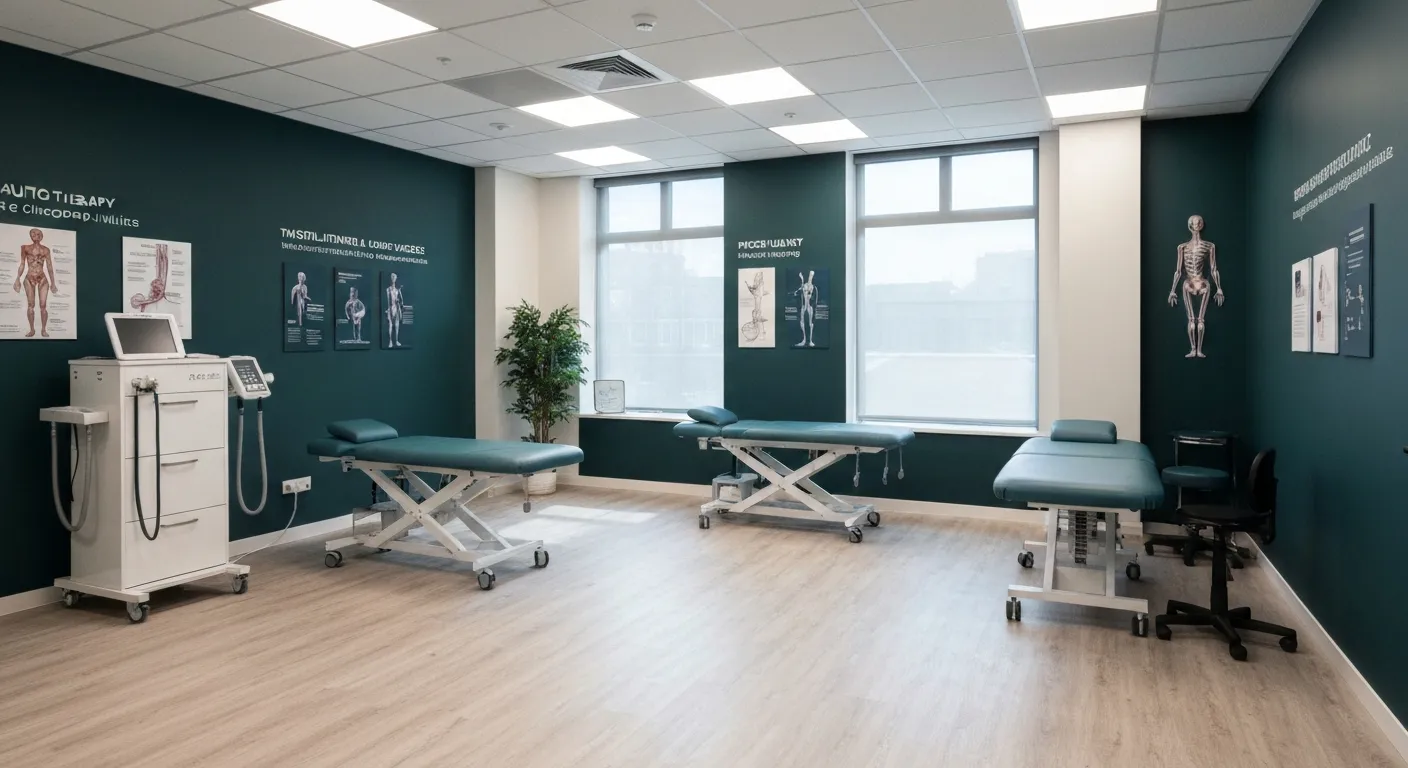
The Role of Physiotherapy in Enhancing Chiropractic Care Outcomes

Complementing Chiropractic Care with Physiotherapy: What You Need to Know
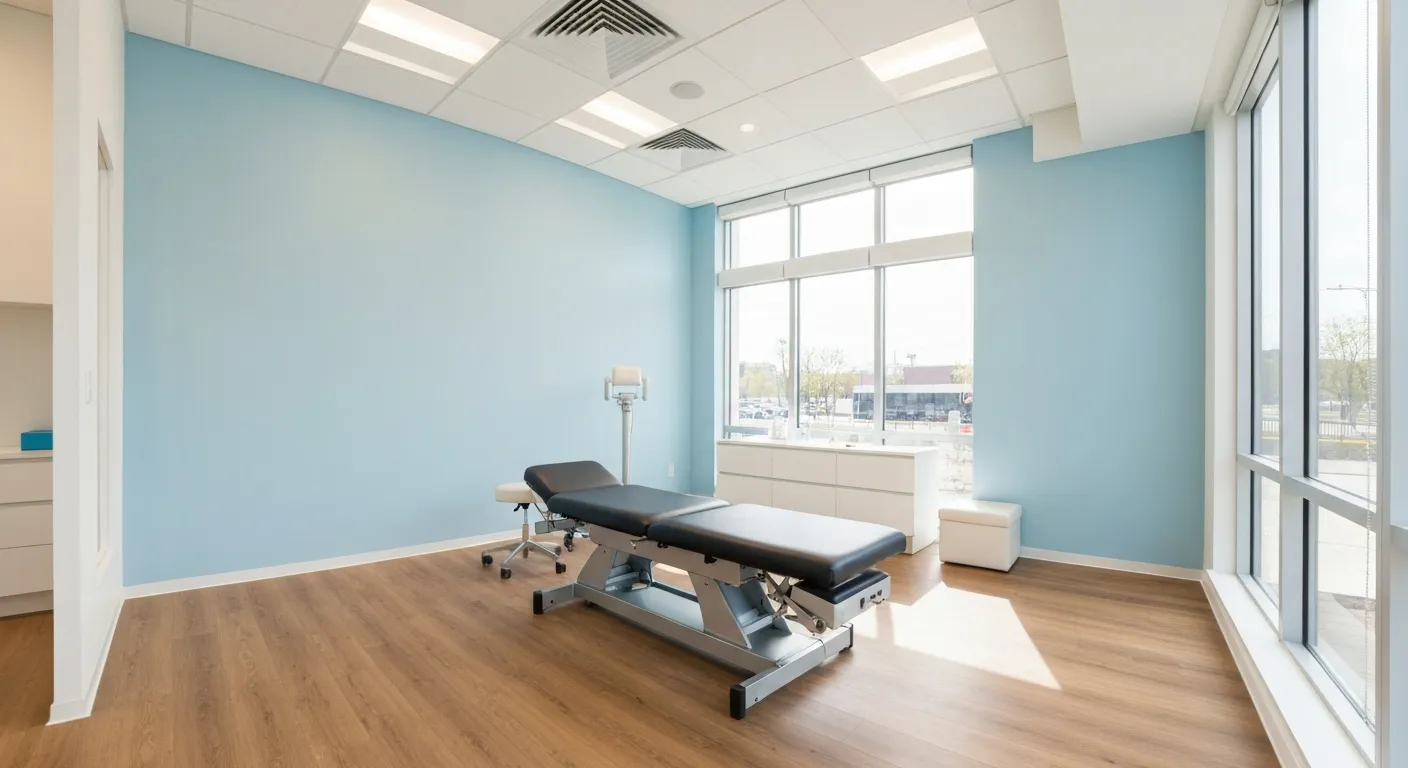
What to Expect During Your First Chiropractic Visit

Simple Lifestyle Adjustments to Maintain a Healthy Spine

Personalized Nutritional Counseling for Improved Health Outcomes

Exploring Non-Surgical Treatments for Spine-Related Conditions
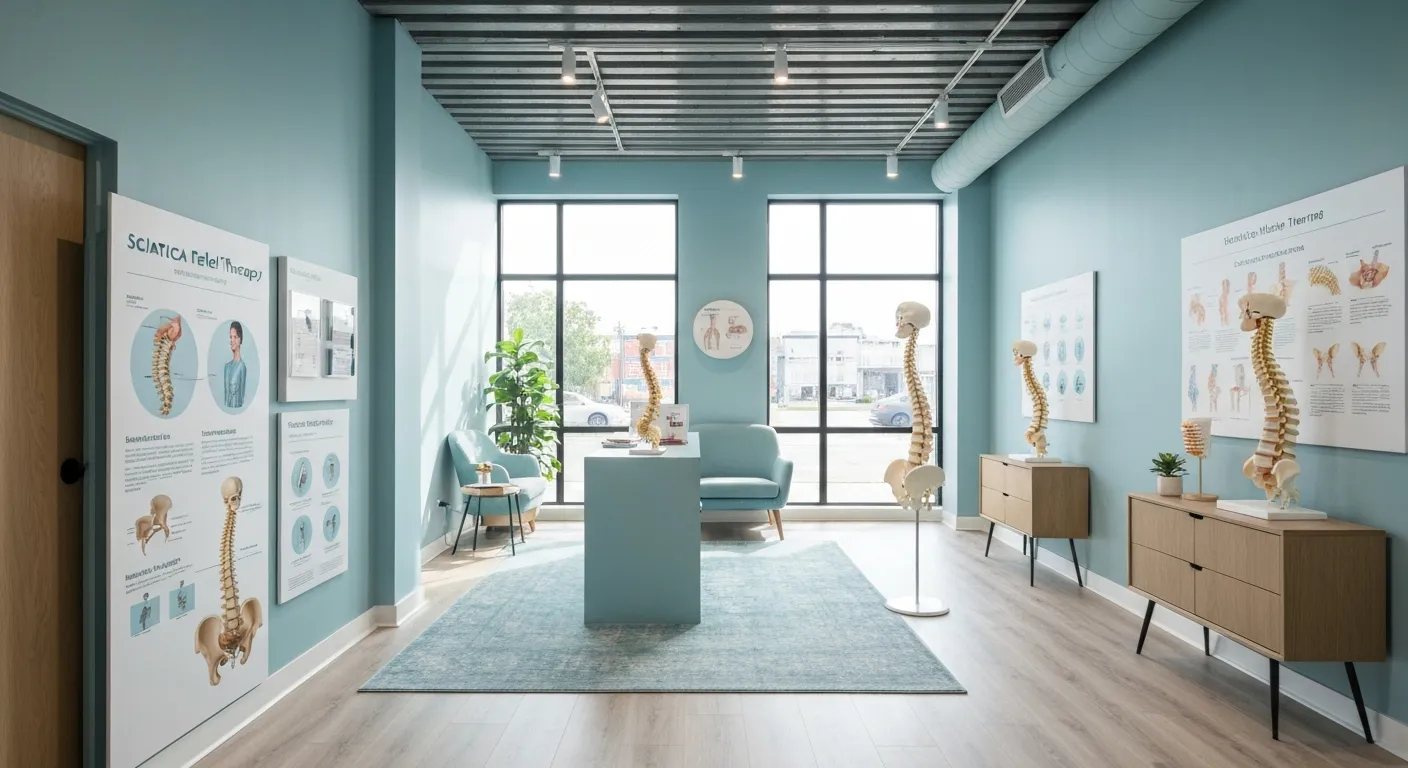
An Introduction to Spinal Decompression for Sciatica Patients
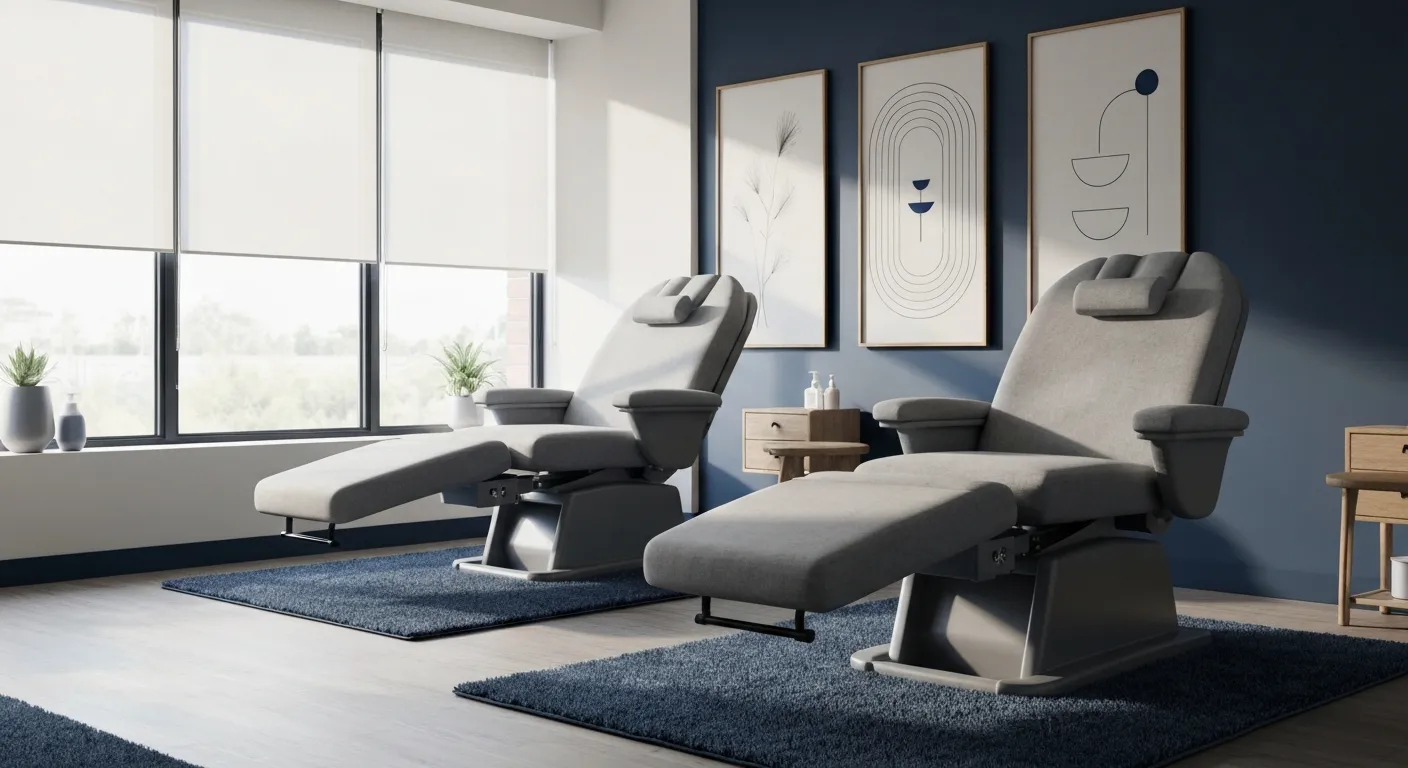
Transformative Success Stories: Patient Experiences with Chiropractic Treatments
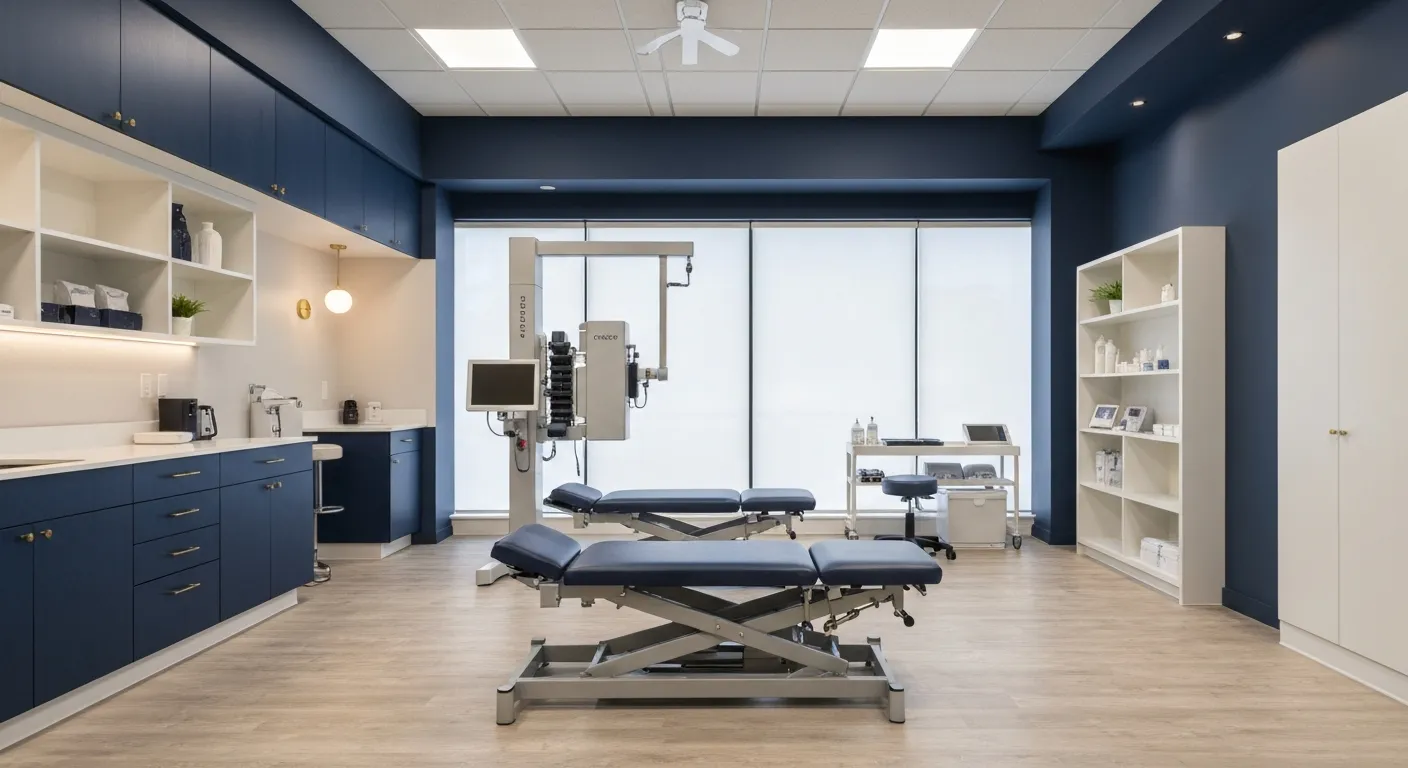
Why Chiropractic Care Is Essential for Back Pain Relief

Addressing Underlying Causes Versus Symptom Management in Pain Care

The Role of Nutrition in Enhancing Chiropractic Treatment Effectiveness
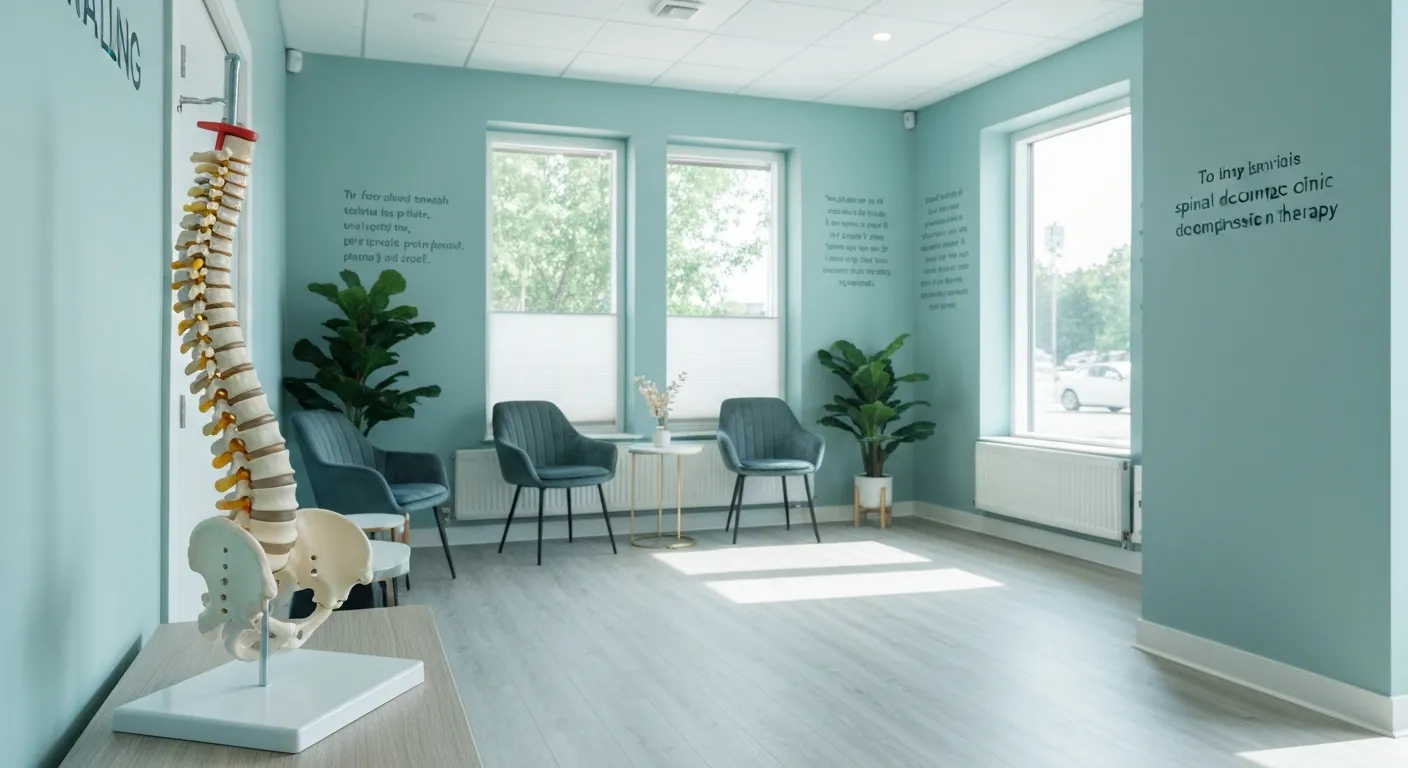
Sciatica Treatment Options: Is Spinal Decompression Right for You?

Lifestyle Tips to Maintain a Healthy Spine and Prevent Back Issues

The Synergy Between Physiotherapy and Chiropractic Treatments
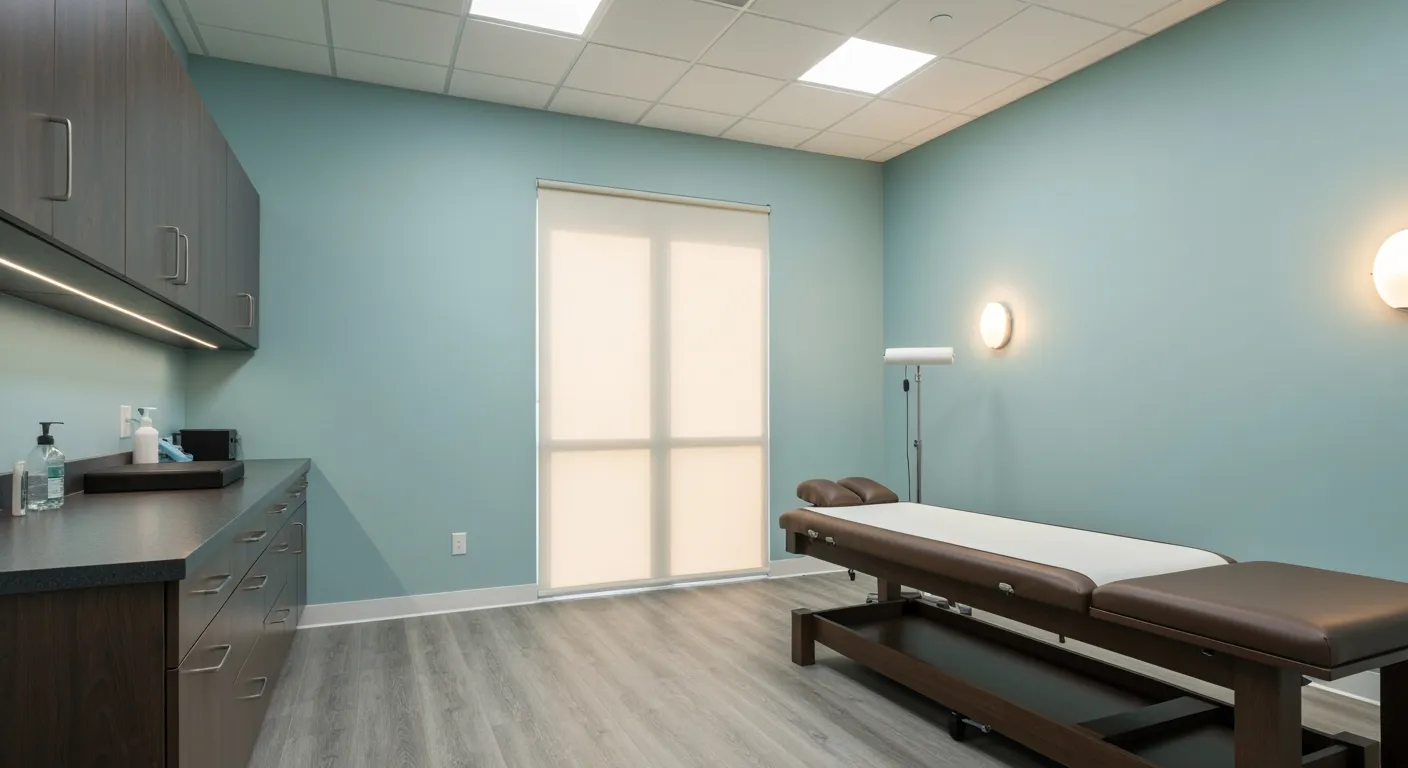
What Happens During Your Initial Chiropractic Consultation

Effective Corrective Exercises for Sustainable Pain Management
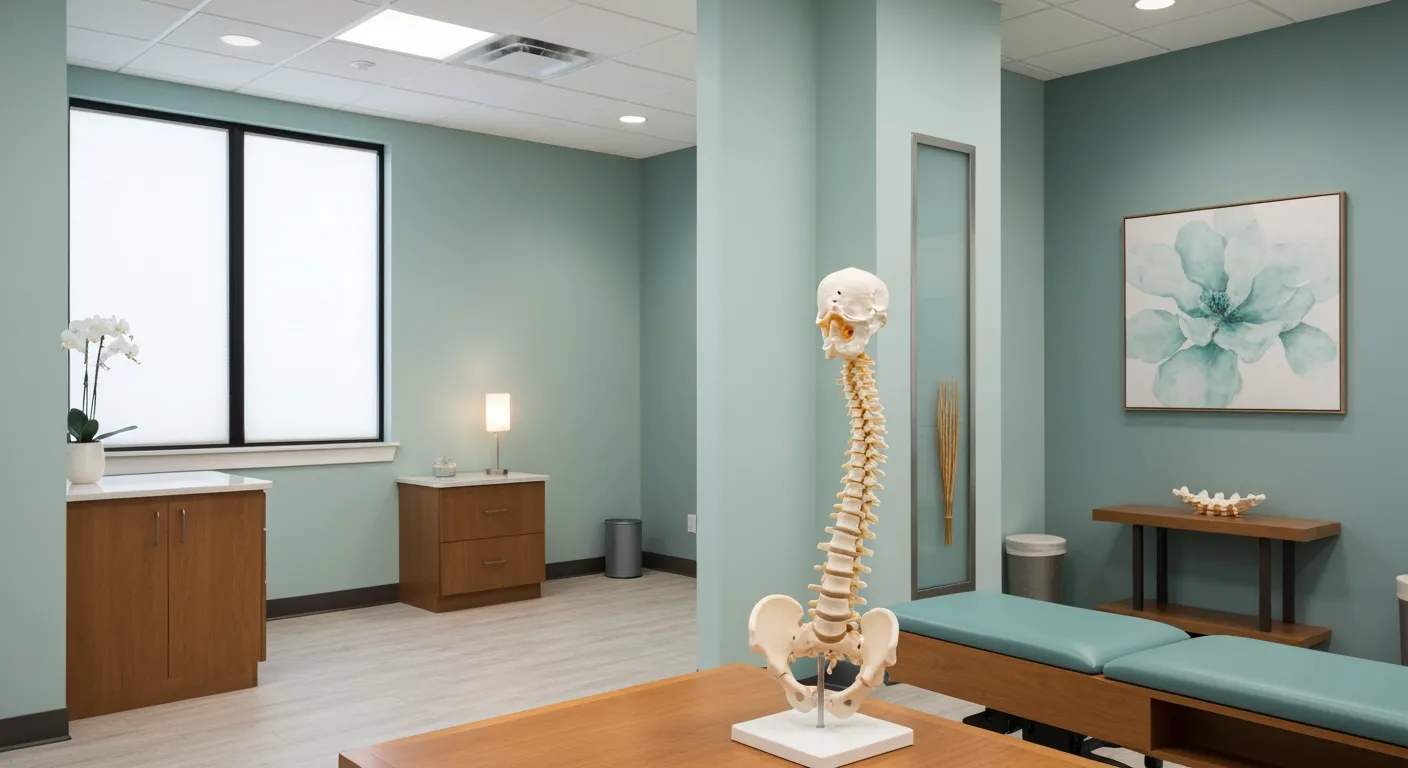
Taking a Root Cause Approach to Chronic Pain Management

Holistic Pain Management Techniques Without Surgery

How Patient Success Stories Validate Chiropractic Care Benefits
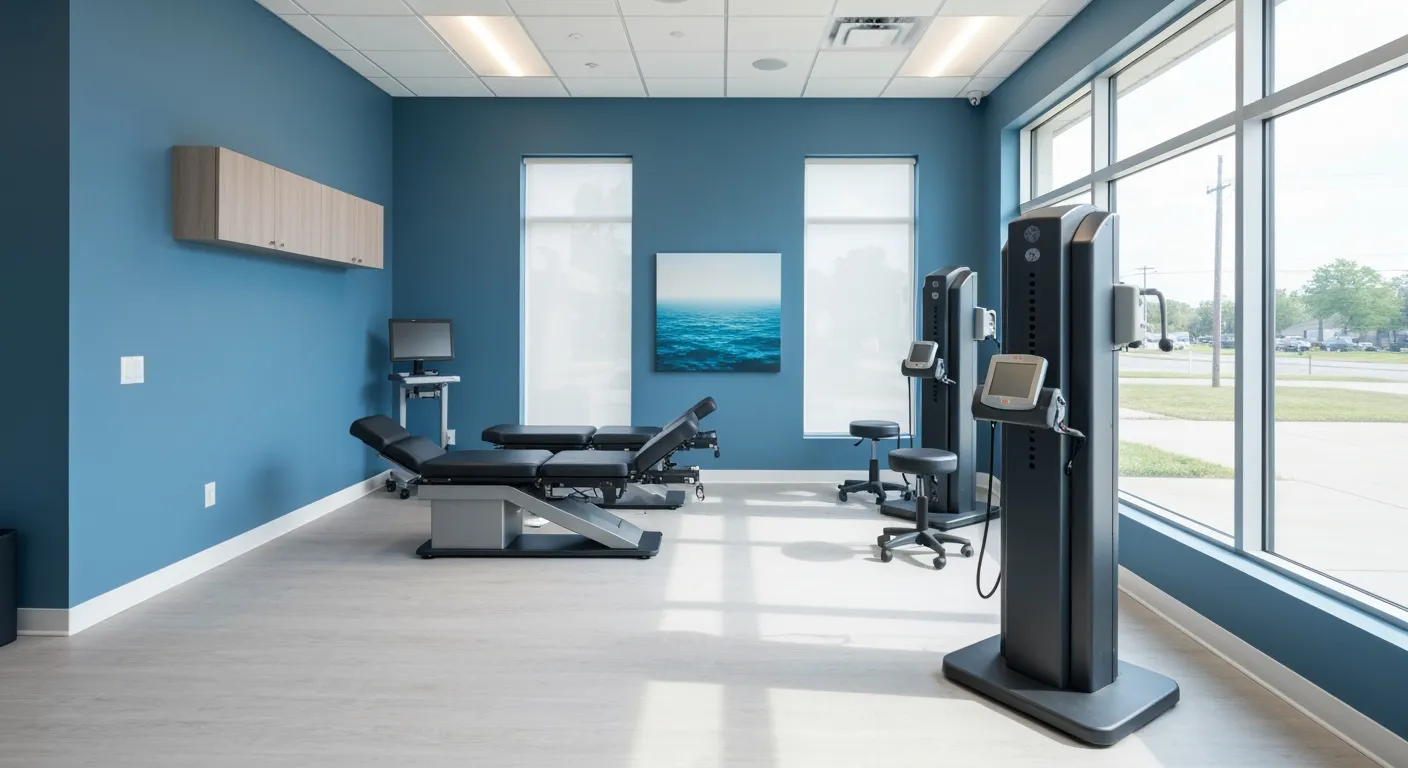
Spinal Decompression: Innovative Treatment for Sciatic Nerve Pain
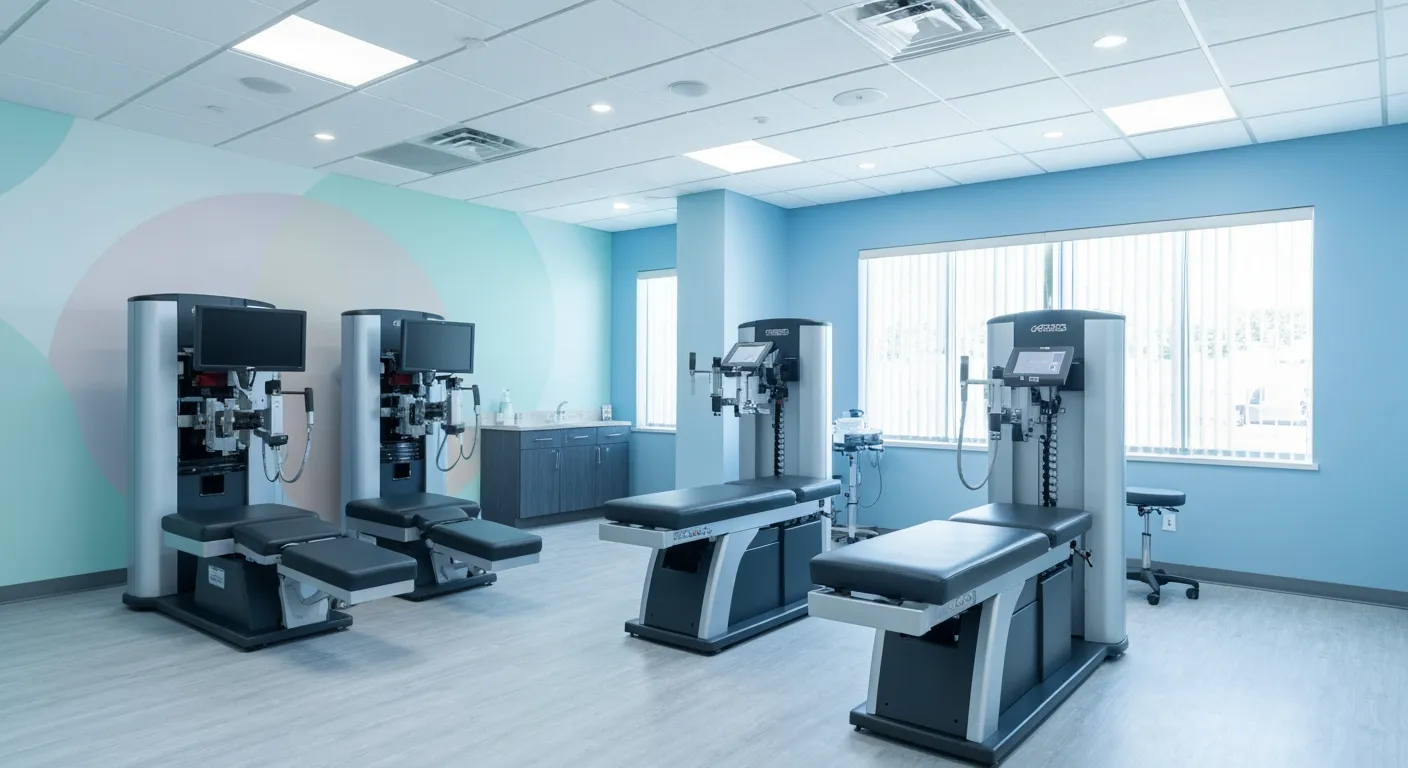
Spinal Decompression Therapy: A Non-Invasive Approach to Sciatica Relief

Exploring Holistic Approaches Beyond Surgery for Pain Relief

Practical Lifestyle Advice to Support a Healthy Spine Every Day

Corrective Exercise Routines Designed for Long-Term Pain Prevention

Real Patient Stories: Overcoming Chronic Pain with Chiropractic Care

Lifestyle Changes That Promote a Healthy Spine and Prevent Injury

How Addressing the Root Cause of Pain Leads to Lasting Relief

Non-Surgical Holistic Therapies to Manage Chronic Pain Effectively

Nutritional Counseling's Impact on Physical Health and Healing

Benefits of Regular Chiropractic Care for a Stronger Back

Your First Chiropractic Visit: What to Expect and How to Prepare

Patient Experiences: How Chiropractic Care Transformed Their Lives
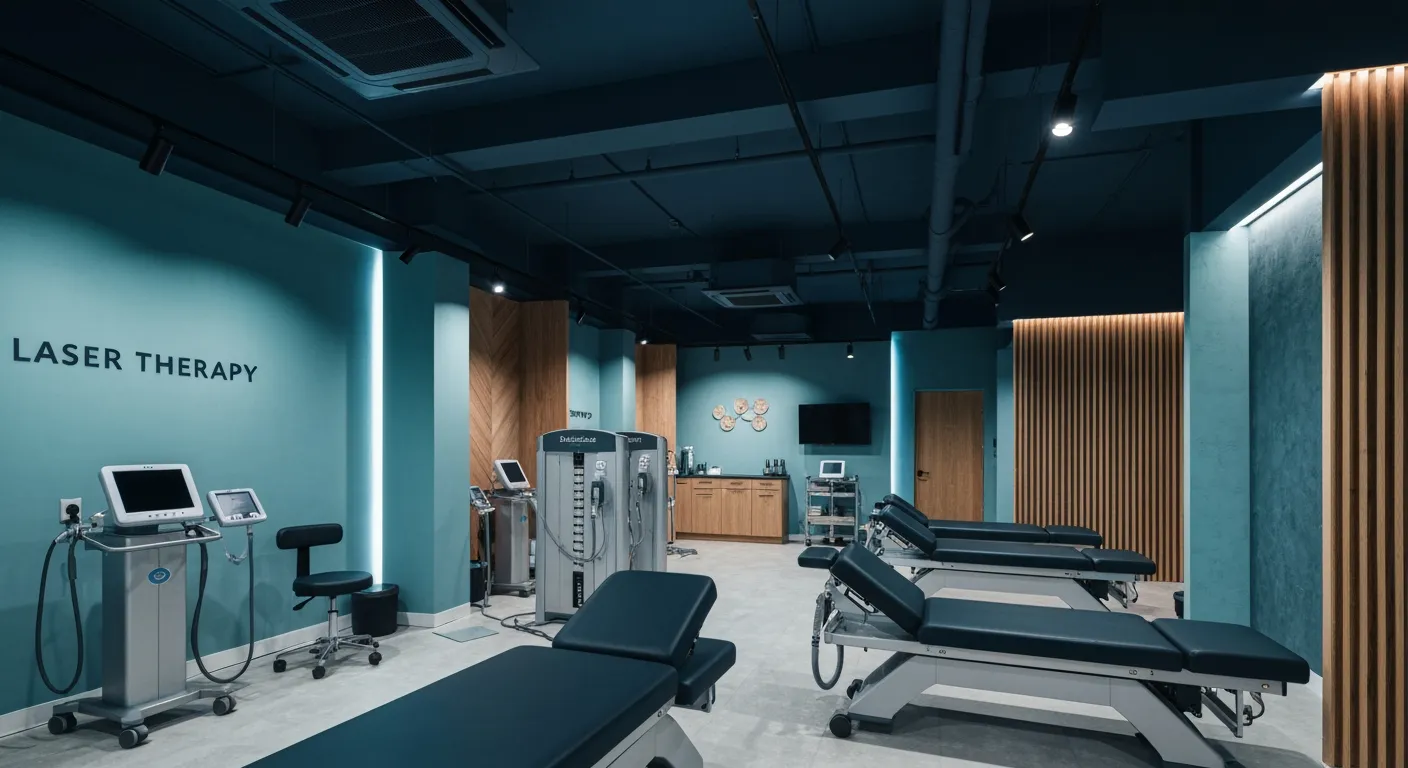
Exploring Holistic, Non-Surgical Options for Pain Management

Combining Physiotherapy with Chiropractic Treatments for Enhanced Recovery

Holistic Treatments That Offer Alternatives to Surgery for Pain Relief

Corrective Exercise Strategies for Long-Term Spine Health

How Physiotherapy Complements Chiropractic Adjustments for Better Outcomes

First-Time Chiropractic Visitors: What You Should Know

Understanding the Importance of Treating Pain at Its Source

Adopting Lifestyle Changes to Support Your Spine's Wellness

Utilizing Physiotherapy to Enhance Chiropractic Treatment Outcomes

The Key Advantages of Chiropractic Care for Back Pain Sufferers
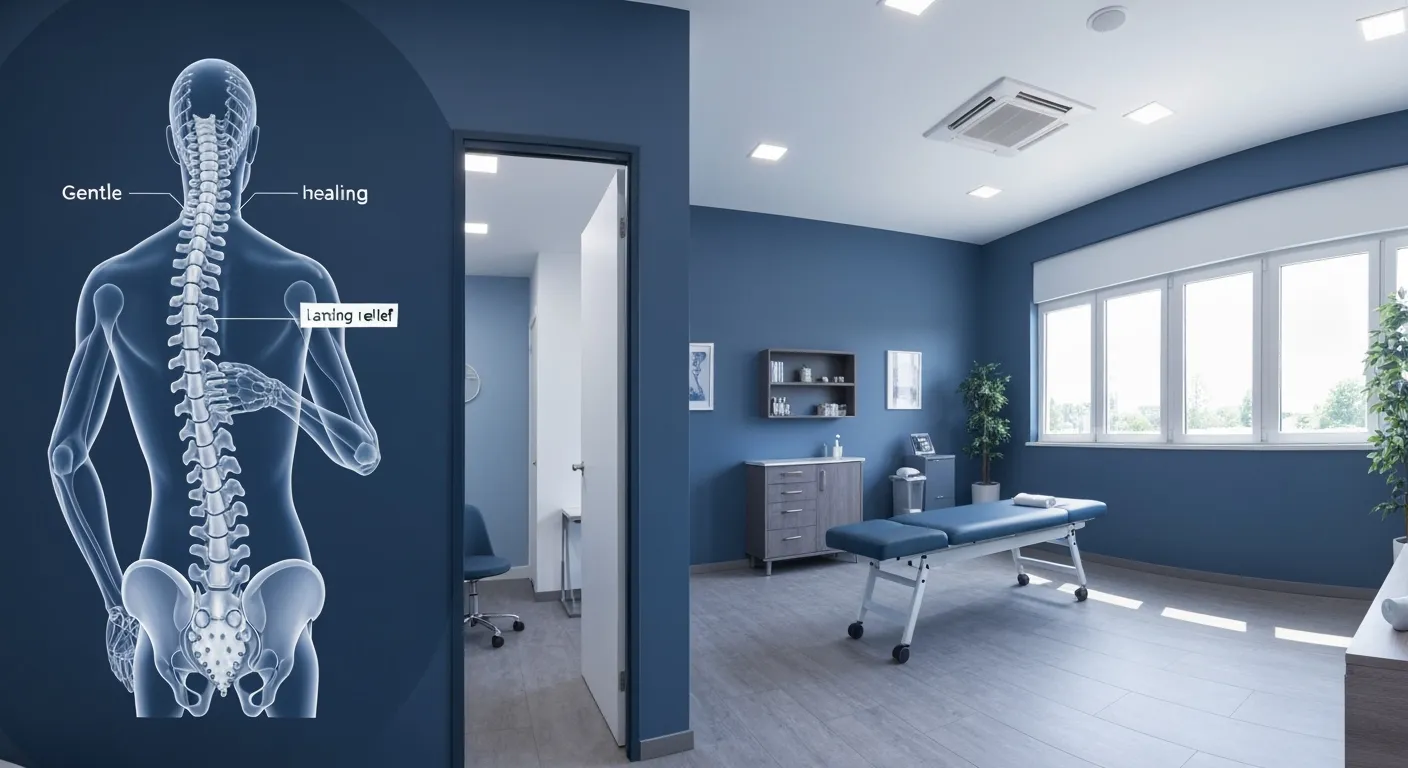
Why Focusing on Root Causes Improves Pain Treatment Success

Corrective Exercises That Promote Lasting Pain Relief and Mobility

Sciatica Relief Through Targeted Spinal Decompression Techniques

Preparing for Your First Chiropractic Appointment with Confidence

Healthy Lifestyle Habits for Maintaining Spinal Alignment

Success Stories Highlighting Chiropractic's Role in Pain Recovery

Top Benefits of Chiropractic Care for Chronic Back Pain

Nutrition Tips to Boost Your Overall Wellness and Recovery

How Chiropractic Care Alleviates Back Pain Naturally

How Nutritional Counseling Supports Overall Wellness and Spine Health
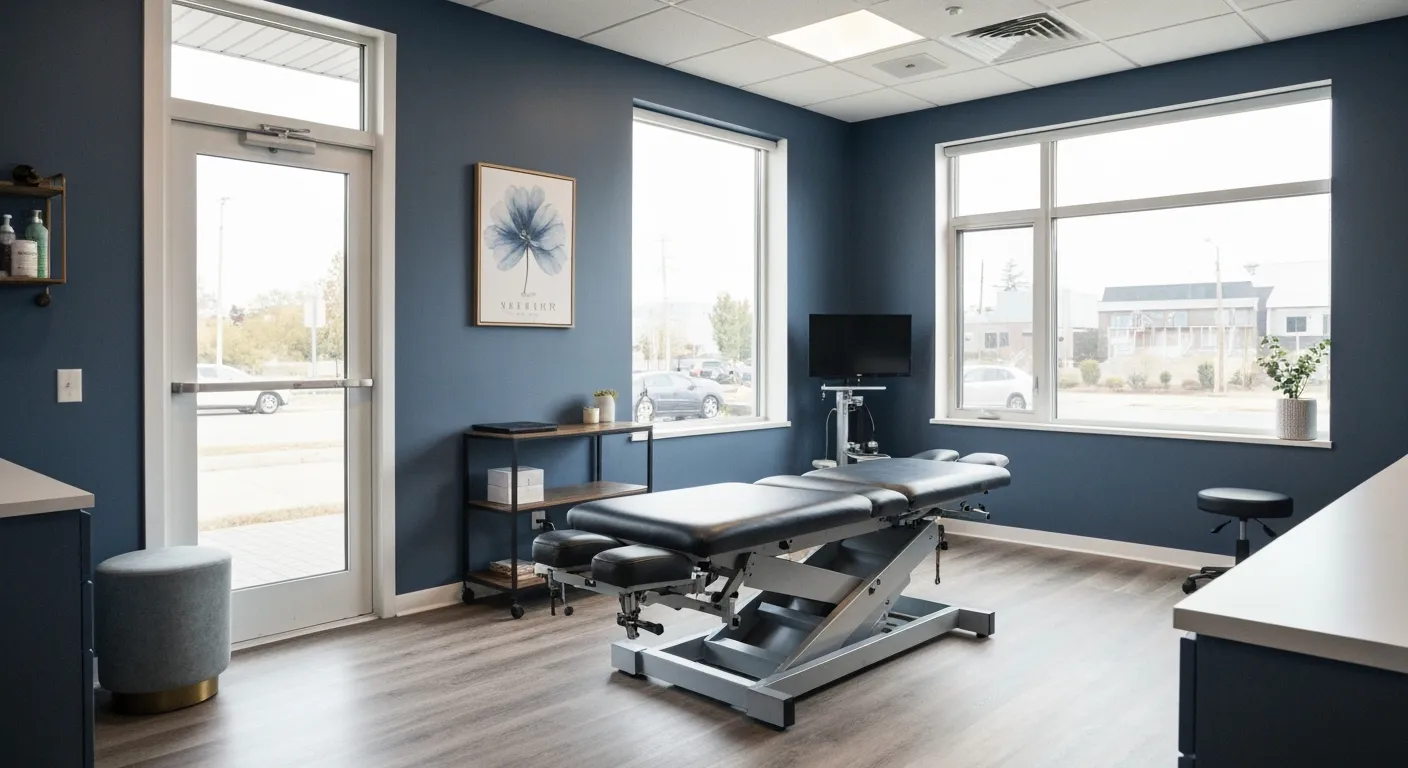
Step-by-Step Guide to Your First Visit with a Chiropractor

Using Nutrition to Support Chiropractic and Overall Wellness

Integrating Physiotherapy in Your Chiropractic Healing Journey

How Physiotherapy Complements Chiropractic Adjustments for Faster Healing
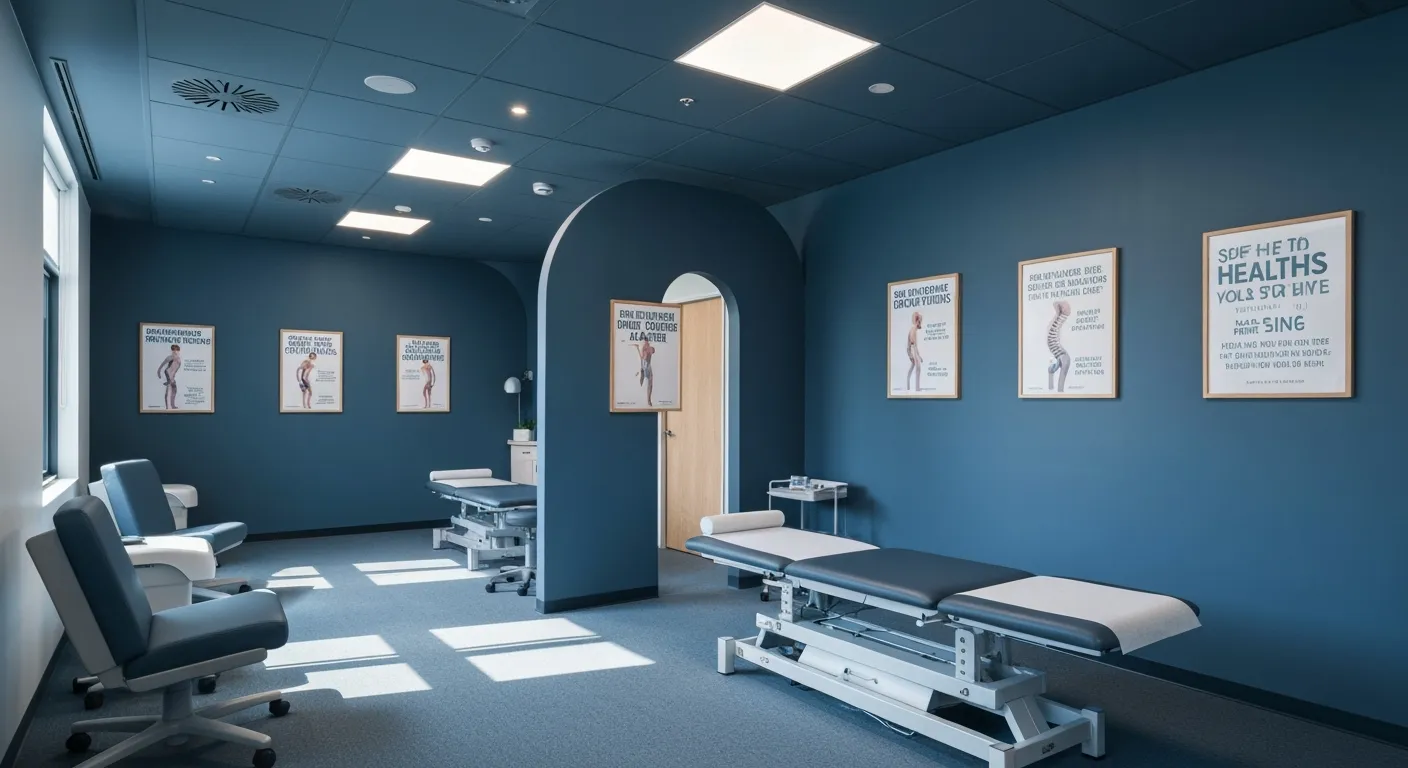
Lifestyle Tips for Maintaining a Healthy Spine and Preventing Back Pain

Heartwarming Patient Testimonials Highlighting Chiropractic Success

How Proper Nutrition Supports Chiropractic and Physiotherapy Treatments

Combining Physiotherapy and Chiropractic Treatments for Optimal Recovery

Why Chiropractic Treatments Are Effective for Managing Back Pain

Choosing a Chiropractor: Tips for Finding a Trusted Provider

Integrating Physiotherapy and Chiropractic: Benefits and What to Expect

How Tailored Corrective Exercises Can Aid in Pain Management

Chiropractic Care: A Proven Solution for Alleviating Back Pain

What to Expect at Your First Chiropractic Visit: A Comprehensive Guide

The Importance of Root Cause Analysis in Effective Pain Management

The Role of Corrective Exercises in Sustaining Pain-Free Living

Combining Chiropractic and Physiotherapy for Comprehensive Pain Relief

How Addressing Underlying Causes Improves Pain Treatment Effectiveness
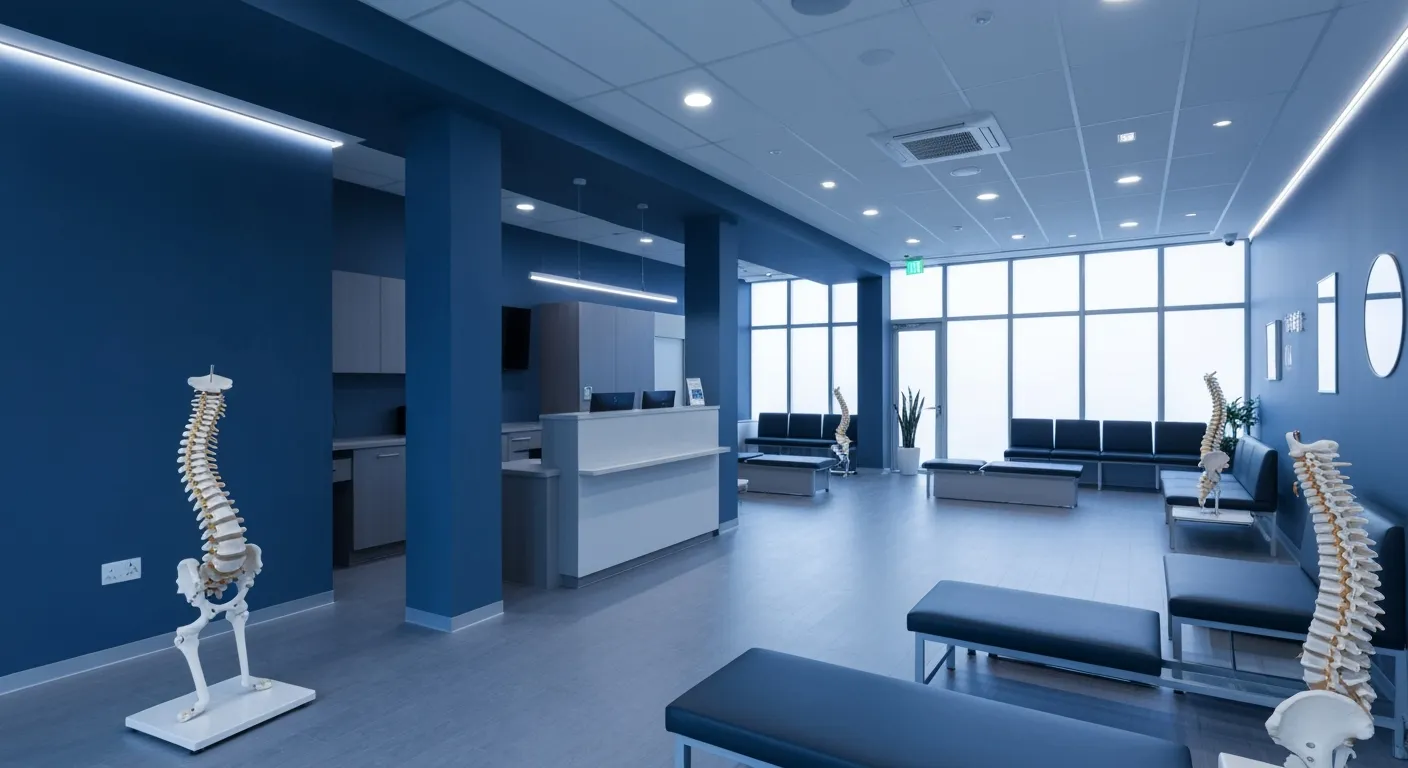
Maintaining Spinal Health Through Lifestyle Changes and Preventive Care

Understanding the Benefits of Chiropractic Adjustments for Back Pain Sufferers

Spinal Decompression Therapy: A New Hope for Sciatica Relief

Lifestyle Recommendations to Support a Healthy Spine and Reduce Pain

Choosing the Right Chiropractor: Key Factors to Consider Before Your First Appointment

Non-Invasive Treatment Alternatives: A Holistic Approach to Pain Relief

Corrective Exercises to Support Long-Term Relief from Chronic Pain

Exploring Non-Surgical Approaches to Spine Health and Wellness

Tips for Daily Habits That Keep Your Spine Strong

Success Stories: How Chiropractic Treatments Changed Lives

Why Focusing on the Root Cause of Pain Leads to Better Outcomes

Nutritional Counseling and Its Impact on Overall Wellness and Recovery

Patient Testimonials That Showcase the Power of Chiropractic Care

Preparing for Your First Chiropractic Appointment: What You Need to Know

